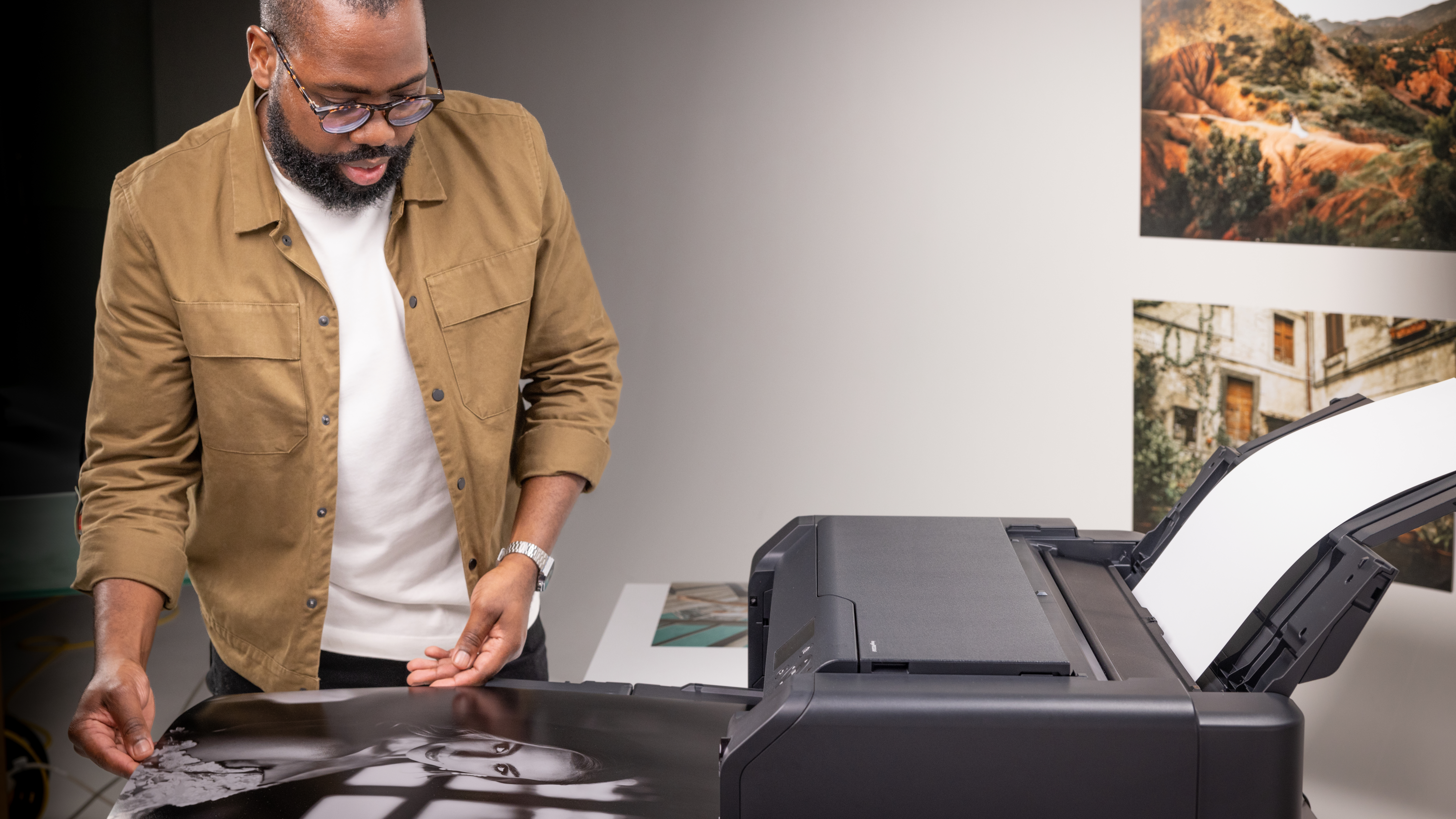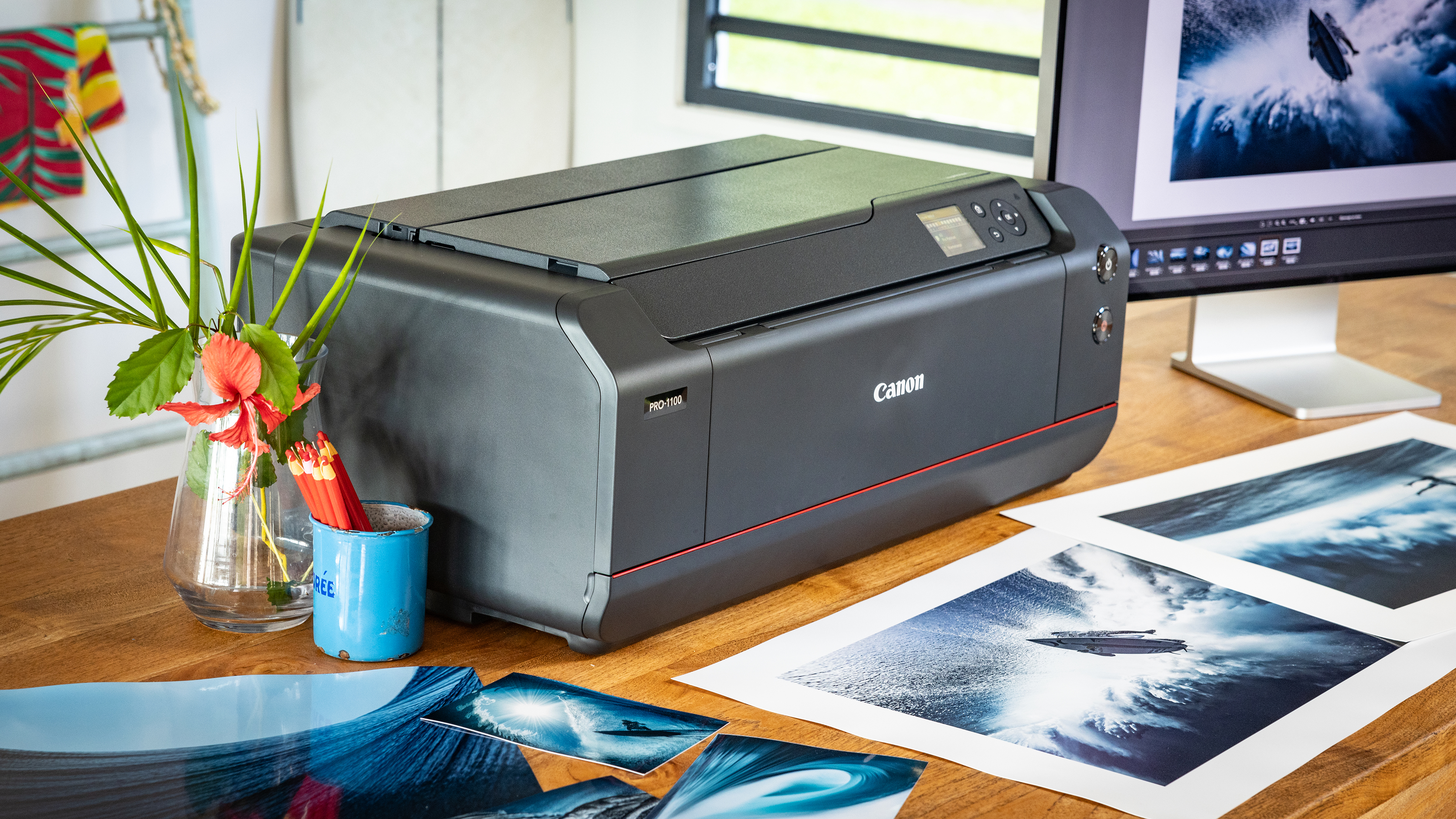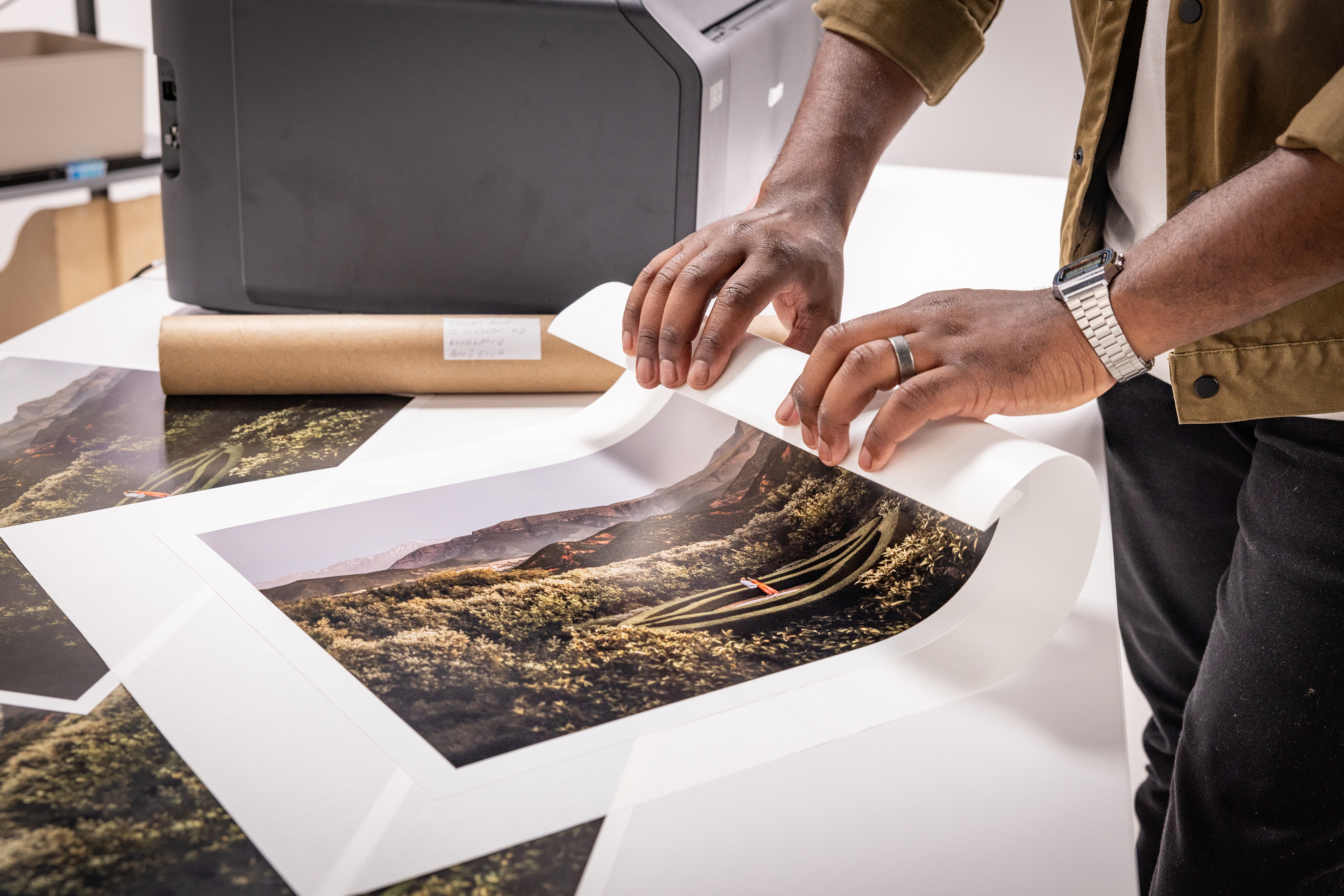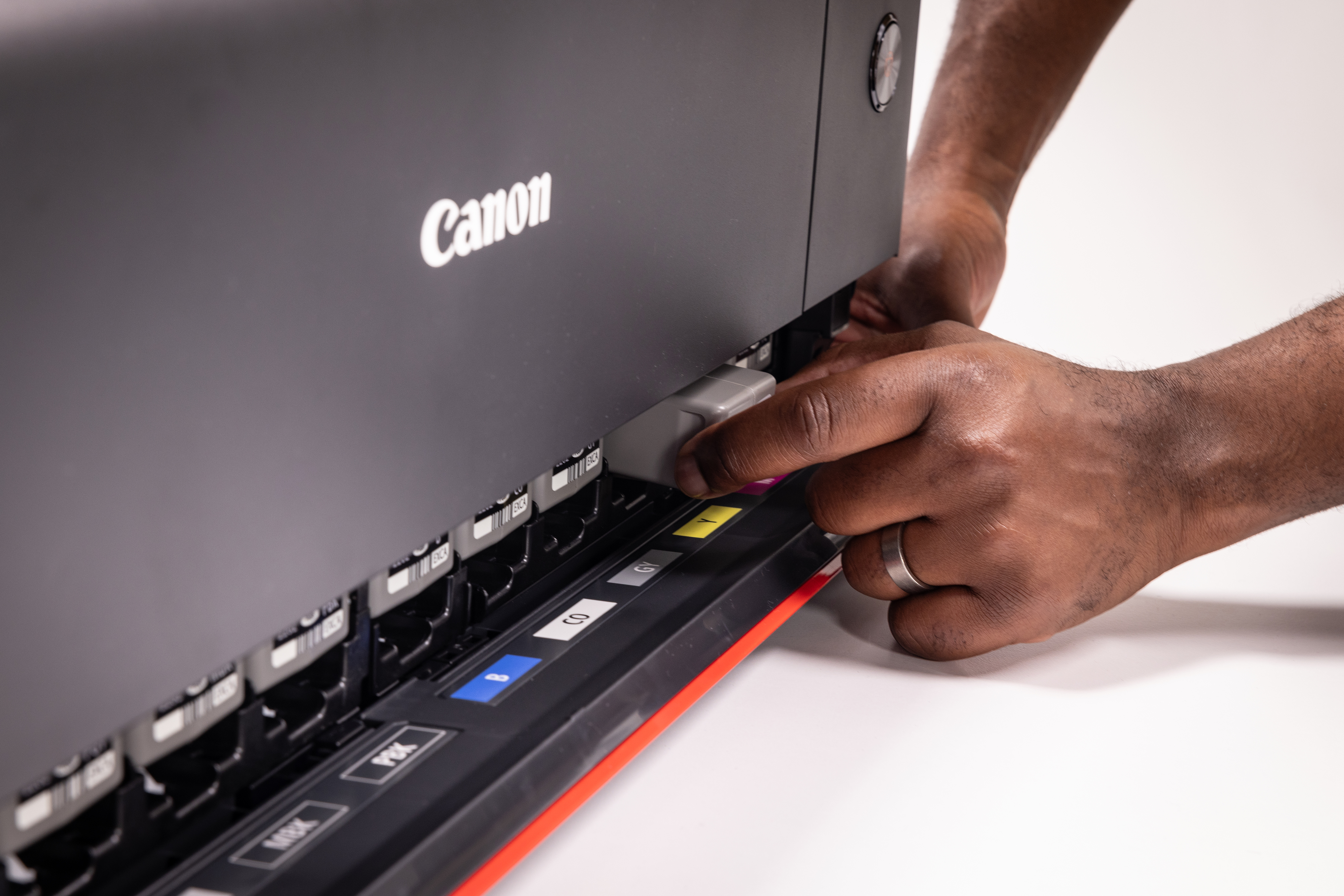Six steps to perfect color prints

Printing should be simple, but it's like photography: the better you understand the kit you're using and how it works, the better the results you'll get. There are some common pitfalls and mistakes people make when printing, but here we'll distill the process down to the key steps to ensure that your printed output is what you expect.
There are many practical benefits of a color-calibrated printing workflow. Color accuracy means less wastage of time, ink and paper on test prints and reprints. Selling prints of your photos can be a great boost to your photography business but, if you want to make money from printing, it pays to get it right every time.
Here are the six steps to ensure perfect printed results, with advice from print expert Zubair Rahim, product specialist at Canon Europe, and destination wedding photographer Igor Demba, who produces his own prints as a lucrative part of his business.
1. Calibrate your screen
If your printed output doesn't match what you see on screen, a key step is to color-calibrate your monitor. This is vital to ensure color accuracy and predictable results.
Some top-spec monitors have a self-calibration feature, but for most it's worth investing in a color calibration kit. This includes software and a colorimeter – a small device that you hang on the front of your screen. You then launch the software and simply follow the instructions that appear on-screen. This will evaluate the color output of the monitor and adjust its settings to ensure accurate color rendering.
The other thing to bear in mind is that modern monitors can display a much wider range of tones than photo prints, revealing more detail than can be printed in shadow areas in particular. The result, Zubair warns, is that "prints always look darker than you expect."
For a more accurate on-screen impression of what you'll get in print, even if you don't calibrate the colors, he advises turning your monitor brightness down. If your monitor offers precise settings, try 120 nits (120 candela per square meter) and then fine-tune if necessary.

2. Choose a paper to suit the image and your creative intentions
"Different types of paper have different white points and absorb ink differently," Igor observes, so that the same image can look quite different when printed on different media.
The coating on the surface of glossy photo paper means that less ink is absorbed, creating crisper prints. This is great for pictures with vibrant colors, but the reflective finish means it is not ideal for prints to be viewed under exhibition lighting. Uncoated paper is more porous and will absorb more of the ink, so the finished print will express the texture of the paper. Matte paper is more suited to warmer tones or moody monochrome.
There's a vast choice of media available – gloss, semi-gloss, luster, matte, textured, woven, fine-art, canvas and beyond. So, for each print, select a paper that suits the character of the image and what you plan to do with the print. A colorful family portrait that your client will keep in an album does not require the same paper as a low-contrast, black-and-white art print to be exhibited on a gallery wall.
3. Install drivers and paper profiles
Before you start printing, it's essential to install the correct printer profiles for the paper you're using.
ICC profiles ensure accurate color reproduction by enabling the printer to adjust its color output for the white point and shade of that specific paper. For optimal results, Zubair recommends printing with Canon's Professional Print & Layout (PPL) software. PPL includes a library of ICC profiles for Canon papers and fine art media.
If you opt for third-party papers, such as those from Canson or Hahnemühle, the matching ICC profiles are usually available for download on the paper manufacturer’s website. If not, then choose the ICC profile of the nearest Canon paper with similar properties.
For more recent papers and printers, look for AM1X files. These go a step beyond ICC profiles and enable the printer to configure even more settings, such as print head height, paper feed vacuum strength, and (on pro photo printers with multiple black, grey or blue inks) which inks to use, to suit specific papers.
You can install AM1X files using Canon's Media Configuration Tool as part of the process of setting up your pro photo printer.

4. Use the right settings in PPL
Canon's free PPL software works as a standalone program or as a plug-in for your preferred image editor, including Adobe Photoshop, Lightroom and Canon's own Digital Photo Professional(DPP). Even if you don't specifically edit your images with print in mind, PPL is designed to get the best from Canon printers, ink and papers, so using it to manage the print process will help you get the best results. Here are the key settings:
Color space
Professional photographers often shoot in Adobe RGB, which supports a slightly wider range of colors than sRGB, and pro printers such as the Canon imagePROGRAF PRO-1100 are optimized for this color space.
If you have shot JPEGs in sRGB, however, there is no practical benefit in changing the color space for printing – as Igor points out, "altering the color space is when things go wrong. What is important is to keep the color space the same when you save or export your file."
If you shoot RAW then you don't need to worry – use Adobe RGB in your editing software and, if you have a calibrated pro monitor and a pro printer, you can expect great results.
General Settings
Ensure that you have the correct printer selected, then for Media Type choose the specific AM1X file for your paper if available. If you're using a third-party ICC profile and no AM1X file is available, select the closest matching Canon media type. Under Color Management, make sure to select the appropriate ICC profile you’ve installed.
Rendering Intent
"Your camera can capture colors that are outside the printing capabilities of any printer," says Igor. The Rendering Intent setting tells the printer how to handle any colors in the image that fall outside its printable range or gamut. In brief, Relative Colorimetric will adjust only out-of-gamut colors to the nearest printable colors, while Perceptual may then adjust other colors to preserve the relationship between all the colors in the image.
As a rule, if most of the image is in-gamut, colors will change less overall if you use Relative Colorimetric. However, Igor's advice is: "If it's a very colorful image, then I'd choose Perceptual. If it's more neutral or pastel or black-and-white, where subtle grades of contrast are more important, then Relative Colorimetric is the way to go."

5. Soft proof and hard proof
If you have calibrated your monitor and use a color-managed workflow (but not otherwise), you can use PPL's powerful soft proofing feature, which gives you an on-screen preview of what your print will look like with the settings you've chosen. There is still some room for surprises, though, because colors on-screen are generated in a completely different way from colors in print.
PPL also offers the option of hard proofing using its clever Pattern Print feature. This outputs a set of thumbnail images on a sheet of your chosen paper, with subtly different color and contrast settings. Simply choose the best, input the code alongside, and PPL will use those settings to produce the full-size print.
"This will minimize the number of test prints you make, and eliminate repeat prints," Zubair says.
6. Calibrate your printer – if needed
Canon recommends printer calibration when you first install the printer, after replacing the print head, if the printer alerts you that it needs calibration, or if colors seem different – for example, when you reprint a known image with the same settings.
The good news, Zubair says, is that Canon's latest pro photo printers, such as the imagePROGRAF PRO-1100, offer automatic color calibration. Simply select this in the printer menu, and the printer then prints a built-in test pattern and reads it automatically to adjust itself.
For reliable print quality, periodic maintenance may be required – such as cleaning the print head if prints come out streaky in appearance. The maintenance section of your product manual includes all you need to know. Generally, though, the printer will run self-test and maintenance routines automatically, even checking itself for blocked nozzles and adjusting as necessary to compensate, without you having to do a thing.
Canon uniquely offers a complete capture-to-output solution, Zubair points out, and every stage is designed to work hand-in-hand with the others. Printing is only a relatively small part of the story, but a critical one.
"You might spend hours getting a photo, then hours editing it, but all that time is wasted if you're not achieving the final product that you wanted. Calibration is the solution that ensures synergy between all the steps," he says, "and optimizing your workflow will give you an extra edge."
Get the Digital Camera World Newsletter
The best camera deals, reviews, product advice, and unmissable photography news, direct to your inbox!
Digital Camera World is one of the leading authorities on camera and photography news, reviews, techniques, tutorials, comparisons, deals and industry analysis. The site doesn't just specialize in cameras, but all aspects of photography, videography and imaging – including camera phones, gimbals, lenses, lighting, editing software, filters, tripods, laptops, printers, photo books, desks, binoculars and more.
Whether you're using, looking to buy or trying to get the most out of a compact camera, action camera, camera drone, cinema camera, beginner camera or professional camera, Digital Camera World has a roster of experts with combined experience of over 100 years when it comes to cameras, photography and imaging.

